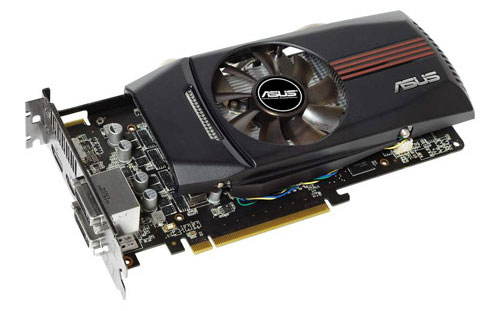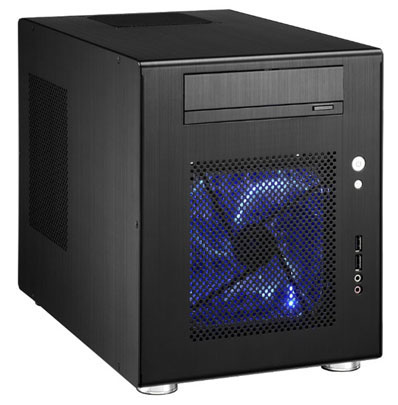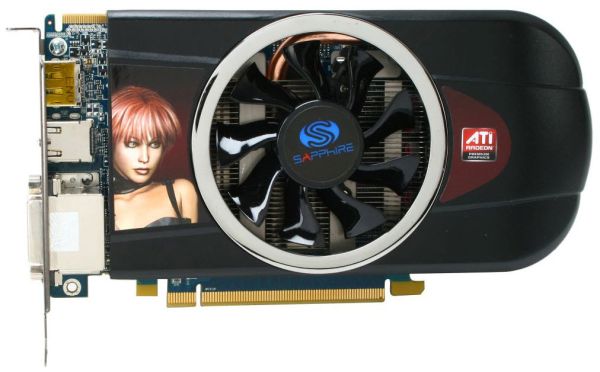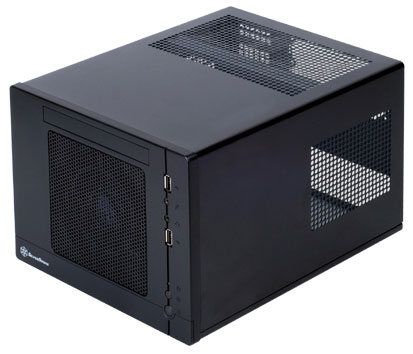Small Form Factor Buyers’ Guide
by Zach Throckmorton on May 25, 2011 10:30 AM ESTIntel Gaming SFF
Gaming rigs, with powerful CPUs and discrete GPUs, tend to produce more heat than standard desktops and HTPCs. Cramming the most power hungry components into a small space poses problems—problems that many newer SFF chassis obviate by getting a little bigger. Intel’s new Sandy Bridge CPUs are remarkably powerful while using relatively little juice. Similarly, AMD (ATI) GPUs tend to use less power under load than their NVIDIA competitors. Combine the two and it’s possible to assemble a nearly bleeding edge gaming rig in a slightly larger (13.6” x 9” x 10.8”) SFF system—and no, we aren’t going to put together a dual-GPU beast in the Silverstone FT03 chassis for this build, even if that is an option.
| Intel Gaming SFF | |||
| Component | Description | Cost | Rebate |
| Case | Lian Li PC-Q08B | $101 | |
| PSU | Antec TruePower New TP-550 | $90 | |
| CPU | Intel Core i5-2500K (4x3.3GHz, 3.7GHz Turbo, 8MB L3) | $216 | |
| Motherboard | ASUS P8H61-I | $85 | |
| GPU | ASUS EAH6850 DC/2DIS/1GD5/V2 Radeon HD 6850 | $155 | -$20 |
| Memory | Patriot 4GB (2x2GB) PSD34G1333K | $40 | |
| HDD | Samsung SpinPoint F3 HD103JS 1TB | $61 | |
| DVDRW | LITE-ON DS-8A5S | $33 | |
| OS | Windows 7 Home Premium 64-bit OEM | $100 | |
| Total Price | $881 | $861 | |
Note: The differences in case, PSU, and other components affect the total price.
If you compare with the AMD build, look at just the CPU, motherboard, and RAM.
Our Intel gaming SFF starts with the Core i5-2500K, a CPU that’s easily capable of running all the latest games (with an appropriate GPU). It uses very little power at idle and is an all around excellent chip. While it’s not quite as potent as the Core i7-2600K (thanks to the lack of Hyper-Threading), it also dissipates less

heat, making it a perfect fit for an SFF. Besides, if you’re planning on gaming and you’ll only be using a single GPU, particularly at higher resolutions there’s very little advantage to getting a faster CPU.
The AMD Radeon HD 6850 is a good match for the i5-2500K. Like the CPU, the 6850 isn’t the fastest GPU, but it’s plenty powerful and capable of playing the latest titles at 1080p and high detail settings at acceptable framerates. The 6850 is slightly slower than the previous generation 5850 (10% or less on almost all benchmarks), but it uses less power and its power connectors are better positioned (on the side vs. on the end) for use in an SFF case. It’s also about the longest video card that will fit in a mini-ITX chassis. At 10.27” in length, it fits inside the Lian Li PC-Q08B with a small amount of breathing room.
Speaking of which, I absolutely love the PC-Q09B case. It’s  somewhat large for a mini-ITX SFF chassis, but its airflow and cooling potential are very good and it can accommodate multiple 3.5” hard drives as well as a standard optical drive and PSU. For this build, we recommend a 1TB Samsung SpinPoint F3 HDD. Once you start installing games, an SSD will quickly run out of space, though you can always go the SSD + HDD combination if you choose. (We’d recommend at least a 60GB SSD, just because games periodically store additional files on the C: drive.) If you have the money, you could also get a larger 120GB SSD for the OS and apps and install a handful of favorite titles there, with any others relegated to the HDD.
somewhat large for a mini-ITX SFF chassis, but its airflow and cooling potential are very good and it can accommodate multiple 3.5” hard drives as well as a standard optical drive and PSU. For this build, we recommend a 1TB Samsung SpinPoint F3 HDD. Once you start installing games, an SSD will quickly run out of space, though you can always go the SSD + HDD combination if you choose. (We’d recommend at least a 60GB SSD, just because games periodically store additional files on the C: drive.) If you have the money, you could also get a larger 120GB SSD for the OS and apps and install a handful of favorite titles there, with any others relegated to the HDD.
Wrapping up our Intel Gaming SFF, I find modular PSUs work best in the PC-Q08B, as cable management is easier because there are fewer cables immediately adjacent to the hard drive cage. The Antec TP-550 is 80 Plus Bronze certified and has a few fixed cables with the rest being modular. If you prefer an alternative, the Seasonic M12II 520W is fully modular and 80 Plus Bronze certified. Both PSUs are very good quality and are more than sufficient wattage to power the components we selected. Just to be clear, the Antec and Seasonic PSUs (as well as other modular PSUs) are a very tight fit against the top drive cage, but with some patience, they will work.
AMD Gaming SFF
Like the HTPC segment, AMD does not currently offer any CPUs that can compete with the Intel offerings in terms of both performance and power consumption. Instead, AMD relies on cost to remain competitive. This AMD gaming system is not as powerful as the Intel system, but it costs a lot less. Here’s what we selected for this build.
| AMD Gaming SFF | |||
| Component | Description | Cost | Rebate |
| Case | Silverstone Sugo SG05-B | $105 | |
| CPU | AMD Athlon II X3 450 (3x3.2GHz, 3x512K L2) | $76 | |
| Motherboard | ASUS M4A88T-I Deluxe | $125 | |
| GPU | Sapphire 100283-3L Radeon HD 5770 | $115 | -$20 |
| Memory | Patriot 4GB (2x2GB) PSD34G1066SK SO-DIMMs | $44 | |
| HDD | Western Digital Caviar Blue WD5000AAKS | $45 | |
| DVDRW | LITE-ON DS-8A5S | $33 | |
| OS | Windows 7 Home Premium 64-bit OEM | $100 | |
| Total Price | $643 | $623 | |
| AMD Gaming Alternatives (Downgrades) | |||
| CPU | AMD Athlon II X2 250 (2x3.0GHz, 2x1MB L2) | $61 | |
| GPU | Sapphire 100287VGAL Radeon HD 5670 | $70 | -$10 |
| Total Price with Downgrade | $583 | $573 | |
Note: The differences in case, PSU, and other components affect the total price.
If you compare with the Intel build, look at just the CPU, motherboard, and RAM.
AMD’s Athlon II X3 450 offers tremendous value for the budget-conscious gamer; it uses less power than its

Black Edition Phenom II and quad-core relatives and only costs $15 more than the dual-core X2 250 we’ve recommended twice now. Matched with a Radeon HD 5770, you’ve got a very capable gaming system. At less than $100 after rebate, the Radeon HD 5770 offers astonishing value to gamers on a budget. The 5770 may not seem like much compared to other desktop GPUs, but keep in mind that this venerable GPU would rank near the top of the mobile GPU heap—it has the same number of GPU cores and is clocked higher than the Mobility HD 5870. So if you’re curious about the gaming potential, it would be roughly equal to the GTX 460M notebooks we’ve looked at recently, at less than half the price.
The Silverstone Sugo SG05-B mini-ITX chassis includes an 80 Plus certified 300W PSU. This case doesn’t have quite the airflow  potential of the Lian Li recommended above, and it’s also noisier because of the plastic construction, but it’s still a very good case. It’s also smaller at 10.9” x 8.8” x 7”. The SG05-B can house one 2.5” SSD and one 3.5” HDD, but since this is a budget build, we’re going with one 500GB Western Digital Caviar Blue mechanical HDD to keep costs down. As always, you can go with a larger capacity hard drive if necessary, and you can certainly add an SSD later if you’re interested. The case also supports a slim optical drive, so we chose a DVDRW to fill that role.
potential of the Lian Li recommended above, and it’s also noisier because of the plastic construction, but it’s still a very good case. It’s also smaller at 10.9” x 8.8” x 7”. The SG05-B can house one 2.5” SSD and one 3.5” HDD, but since this is a budget build, we’re going with one 500GB Western Digital Caviar Blue mechanical HDD to keep costs down. As always, you can go with a larger capacity hard drive if necessary, and you can certainly add an SSD later if you’re interested. The case also supports a slim optical drive, so we chose a DVDRW to fill that role.
Recommended Gaming SFF
Many popular games like StarCraft 2 and World of WarCraft have very modest hardware requirements for enjoyable gaming, especially at lower resolutions and/or detail settings. You could shave an additional $50 or so off the cost of the AMD system by using an Athlon II X2 250 CPU and Radeon HD 5670 GPU instead of the Athlon II X3 450 and Radeon HD 5770. You can see how the Athlon II X3 450 compares with Athlon II X2 255 in our CPU Bench; the 255 is about 3% faster than the 250, so you’re not missing out on much. Similarly, you can see how the 5770 compares to the 5670 in our 5670 review. The 6850 is quite a bit faster, of course, so if you can spare the extra $40 the ASUS 6850 in the Intel system will prove beneficial.
Our SFF Gaming rigs represent opposite ends of the budget spectrum, with the Intel system costing almost 50% more than the AMD system. The Intel system is certainly more capable, but if we remove all the other component differences from the table, the actual cost for the Intel SFF (CPU, motherboard, and RAM) is just under $100. If you only have a modest budget, the AMD system will suffice—you can also see how the two CPUs stack up in our CPU Bench. The AMD CPU may be inferior to the Intel CPU, but pay particular attention to the gaming performance, where the AMD triple core chip still turns out acceptable frame rates. Likewise, the Radeon HD 5770 isn’t as powerful as the Radeon HD 6850, but as you can see in GPU Bench, the cheaper GPU is still quite capable.










71 Comments
View All Comments
Gigantopithecus - Wednesday, May 25, 2011 - link
"Should" being the operative word - in my experience, up-plugging is hit and miss - more hit than miss, but still enough misses that I'm hesitant to recommend doing so without strong qualifications and very specific card/board pairings (none of which are appropriate for this guide).medi01 - Wednesday, May 25, 2011 - link
Very strange choice of components in general.fujii13 - Wednesday, May 25, 2011 - link
Some of us aren't looking to have a separate HTCP from our NAS and/or server and would prefer it to be all in one box. I'm currently running Windows 7 as my head, but have Remote Desktop hacked to allow multiple simultaneous logins and the second login is doing all of my downloading/renaming/organizing of my media mostly automatically without disturbing the login that's running on my KURO. Unfortunately I'm stuck with a crappy USB 2.0 enclosure and have no way to upgrade.What options do we have for SFF computers that also house 4 hard drives?
jrs77 - Wednesday, May 25, 2011 - link
The statement, that an Sugo 05 is noisier because of the plastics etc is totally wrong. Additionally the new version of the case gets shipped with a 450W PSU instead of the 300W one allowing for more decent hardware.My current rig: Sugo 05-450, i5-760@stock, GTX 460, 4GB DDR3-1333, 120GB SSD, 500GB 2.5" HDD. The CPU-cooler is a Prolimatech Samuel 17 with an 120mm Akasa Apache PWM. The fan in the front is a Scythe S-Flex 800 and the PSU is turned upside-down and draws air from the top-grill in the cover.
Or you can use a Corsair H60 to cool the CPU and get rid of a second 120mm fan there to reduce noise even more.
There's nothing noisy about this case... nothing at all and it is the smallest case you'll find to house a full setup... 11 litres... and you can even put a 6850 or similar into the case with ease.
The LianLi Q8 is overrated there!
Gigantopithecus - Wednesday, May 25, 2011 - link
Don't get me wrong - I really like the Sugo 05 - but I simply disagree with you in regards to its noisiness and overall build quality. I think both the Sugo 05 and Q8 are excellent cases - I simply prefer the Lian Li when the budget permits.floobit - Wednesday, May 25, 2011 - link
This comment is one vote for encouraging Anandtech to have higher writing standards. This article has a conversational style, and generally lacks professionalism. I want to be able to forward articles like this to professional peers without fear of seeming uneducated by association. This sentence is especially cogent:"Second, because they are small, they are also less massive." (p. 1).
Thank you.
Darknite39 - Wednesday, May 25, 2011 - link
I don't necessarily view a slightly conversational article in a negative light, but that ridiculous sentence caused me to do a double-take.Gigantopithecus - Wednesday, May 25, 2011 - link
You're welcome.How often have you heard people complain about their mid and full-size towers simply weighing too much? When describing the advantages of a SFF, I think it's worth explicitly stating that smaller systems weigh less than larger systems. In my experience customers and friends, especially older individuals, often really appreciate having a computer that is physically easy to manage.
As for the rest of your criticism, the point of the guides I've written for Anandtech is to detail a selection of components that work well together to perform a specific task. It is not to give detailed technical specifications of individual components (other articles on this site often do that). My guides are starting points for readers interested in researching different types of computers with suggestions for builds. My writing style reflects how I speak with my customers, friends, and colleagues about PCs, so I'm at a loss when you state that this article "generally lacks professionalism."
Mr Perfect - Thursday, May 26, 2011 - link
It looks like Zach is using "massive" to refer to weight, with that odd sentence boiling down to "Second, because they are small, they are also less heavy.". I know AT has some international writers, so it's worth pointing out that in the States, massive is used to describe volume. The sentence reads to us as "Second, because they are small, they are also less big.". You can see the confusion.cjs150 - Wednesday, May 25, 2011 - link
If you want an HTPC that will allow you to rip Blu-rays at 100 fps then fine go with intel i3/i5 but if all you want in an HTPC is stream, play blu-rays, rips some music, watch TV then the suggestions from Anandtech are just plain wrong.A simple HTPC should be built along following lines
1. Passive Zacate board (ASus do one)
2. 4 Mb low voltage memory.
3. 64g SSD
4. 2.5" HD but in a silence box (Scythe do a nice one)
5. Case is tricky - check out the cases from Wesana. New company to me and look rather nice - totally fanless is possible with something like Morex 3500 but it is a bit plasticky
6. Power supply. Pico-ITX is the way to go, but they really need to produce 24 pin version in less than 150 W, this is a company that needs to refresh its product a bit